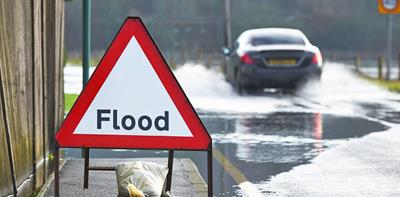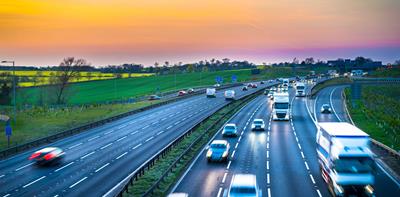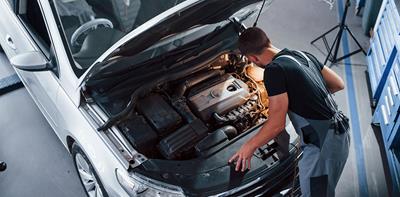
Hydroplaning, or aquaplaning, is that heart-stopping moment when a layer of water breaks the connection between your vehicle’s tyres and the tarmac, and you lose control.
Here are our tips on how to avoid hydroplaning and what to do to regain proper grip if it happens.
EASY AS HACK
All vehicles with tyres can aquaplane, including motorbikes, cars, vans, lorries and aircraft landing on runways. Aquaplaning is less likely to affect bicycles, which tend to be slower and lighter than motorised vehicles.
At a glance
Tips to avoid hydroplaning:
- Prepare for the conditions before you drive
- Watch your speed when the roads are wet
- Keep your tyres in good condition
- Drive smoothly and not too fast
what is hydroplaning?
The Cambridge dictionary definition of hydroplaning is ‘a situation in which the vehicle slides out of control on a wet road’.[1] In the UK, it’s often known as ‘aquaplaning’.
Hydroplaning happens when a water layer builds between your tyres and the road. The tyres lose contact with the surface and fail to grip.
When hydroplaning occurs, you’ll feel that something is wrong, because the engine’s sound changes and the steering feels light as there’s less friction with the tarmac. It will affect your ability to steer, brake or accelerate, and can even lead to complete loss of control of the vehicle as the rear begins ‘fishtailing’ sideways.
what causes hydroplaning?
Rainfall in the UK changes from year to year, but it is usually heaviest at the in the winter months.[2] Heavy rainfall can result in aquaplaning as water collects on the road and pools in puddles.
When the tyres can’t disperse water fast enough, they begin to float on top of the water, instead of touching the road surface.
The risk of hydroplaning or aquaplaning increases when:
- The condition of your tyres is poor/worn
- You are travelling at speed in wet weather
- You’re driving a light vehicle
why is tyre tread depth important?
Tyre tread depth is an essential factor in preventing hydroplaning. It’s more likely to occur when your tyres are worn down to less than the recommended depth. That’s because tyre manufacturers designed the tread to channel water away, and damaged or worn treads mean it’s less likely to do so.
A 20p coin is nearly 2mm, which is above the 1.6mm tyre depth recommended by the Highway Code (the deeper the tread, the better).
To check if your tyre tread is still adequate, try placing a coin into the grooves of your tyre. If you can see the edge of the rim, it means the tread is too shallow, and it’s time to consider replacing your tyre for your safety.
how do you avoid hydroplaning?
Follow our list of tips to avoid hydroplaning:
- Avoid driving in really wet conditions: To keep safe and avoid the risk of hydroplaning, it’s best not to drive in very wet conditions. Read our guide to driving safely in heavy rain. This advice is even more essential for motorcyclists, who face more severe consequences than other motorists when they lose control.
- Don’t drive too fast: It’s important to drive at a safe speed, especially around corners, to keep yourself and others safe. If you drive at more than 30mph and hit water, you’re more likely to aquaplane. Reducing your speed will help prevent aquaplaning on standing water, such as puddles and standing water in drains.
- Maintain a safe distance between yourself and other cars: Driving in wet conditions means the road can be slippery, making it harder to stop. So, give yourself twice the usual space between you and the vehicle ahead. The Highway Code recommends maintaining a 4-second gap in challenging driving conditions, allowing you sufficient time to stop safely.[3]
- Drive smoothly: Steer the vehicle smoothly and steadily, avoiding sudden braking, which increases the risk of hydroplaning. Follow the tracks left by the car in front of you, as its tyres have already moved some of the water aside.
- Ensure your tyres have adequate tread depth: The Highway Code specifies that the legal minimum depth is 1.6mm for cars, vans, and trailers, and 1mm for motorcycles, larger vehicles and large vehicles carrying passengers. However, experts recommend at least 3mm. All must have tread around the entire tyre and 75% across the middle.[4]
- Check your tyres’ air pressure: Poorly inflated tyres can increase the risk of aquaplaning, so check your tyres’ pressure to ensure they are not over- or underinflated. Read our guide to the tyres you need.
- Avoid sudden braking or harsh accelerating: It’s best not to brake suddenly or accelerate in wet conditions, as you’re more likely to skid or aquaplane.
- Be mindful of puddles or standing water: Stay alert and pay attention to how the vehicle ahead navigates around pooled water, so you can follow their lead and do the same. If you see a puddle, judge its depth and, if it’s shallow, drive through it in low gear and take time to cross it.
what should you do if your car starts hydroplaning?
When your car starts to hydroplane, it’s completely understandable to feel scared when a vehicle skids on the road. Still, by following these tips, you can navigate the situation safely and return to stable ground without any issues.
- Do not brake or accelerate hard; this could cause you to skid and collide
- Lift your foot off the accelerator slowly and keep your foot off the clutch (or don’t go into neutral if you’re in an automatic). Doing this will encourage engine braking and avoid freewheeling. As you reduce speed, you should feel the front wheels regaining traction
- Hold your hands steadily on the wheel and gradually steer your car in the direction in which it’s hydroplaning
- Switch off cruise control, or the system might accelerate to maintain its set speed (the opposite of what you want)
- Avoid braking suddenly, or you could make the car skid
- Only attempt to brake once if your car has anti-lock brakes (ABS) and you feel the steering wheel begin to respond.
Aquaplaning on a motorcycle can be particularly dangerous. As well as the advice above, avoid leaning, which increases the risk of losing control. Keep the bike at an upright angle with your body as centralised as possible and use the rear brake for control, using gentle pressure. Steady power is necessary, as excessive or insufficient throttle can cause slide-outs and rear-wheel locks.
how do you know if your car is hydroplaning?
You’ll know your car is hydroplaning when you get the following signs:
- The engine changes noise
- Higher revs as the tyres spin faster
- Steering feels light, disconnected and unresponsive
- The back end of your car drifts (fishtailing)
how to recover from hydroplaning?
It’s essential to stay calm to recover from hydroplaning. You want to be composed and ready when traction returns.
- Once the car begins to regain control, start braking to bring your speed down
- Keep your steering steady and avoid making sharp turns
- Pull over when it’s safe to do so if you feel nervous or shaky
does car insurance cover hydroplaning car accidents?
Car insurance typically covers hydroplaning accidents as long as they are not the result of reckless driving, driving without due care or a deliberate action.
Learn how our car insurance makes life simpler.
FAQs
why is hydroplaning dangerous?
Hydroplaning, also known as aquaplaning, is a dangerous phenomenon because losing control of the car can lead to skidding. It also increases the risk of a collision.
can you hydroplane at any speed?
Yes, you can hydroplane at any speed. There’s no minimum speed at which you become at risk of aquaplaning, but tyres have less chance of gripping the road when travelling at higher speeds. So, if you are travelling under 30mph, your car will likely be able to maintain traction with the road.
Sources
[2] www.statista.com
[3] www.gov.uk
[4] www.gov.uk


